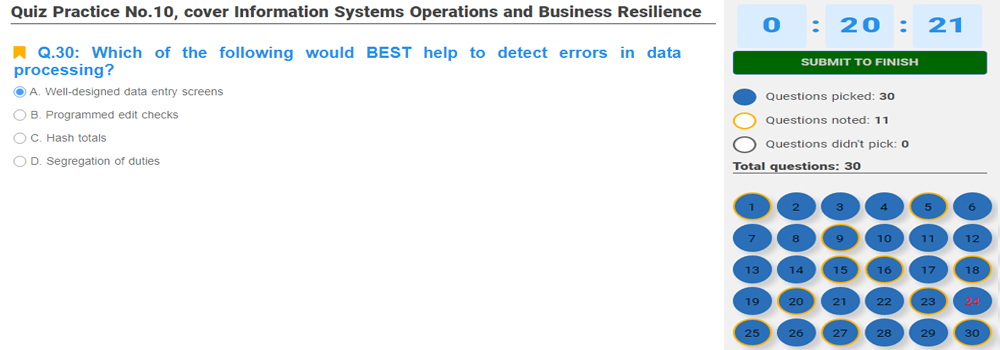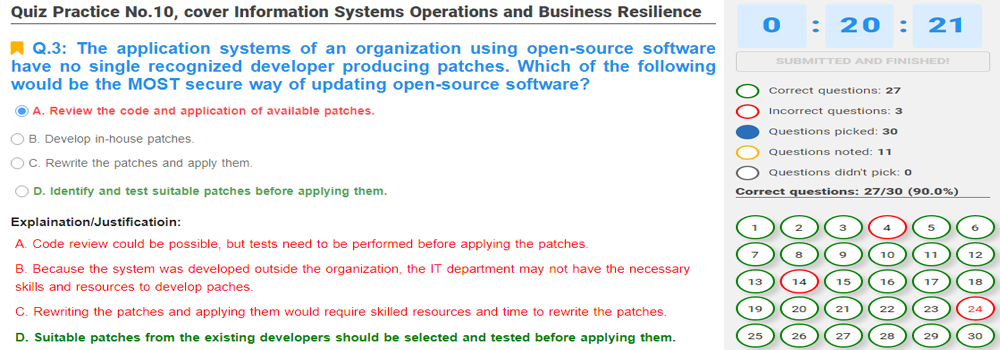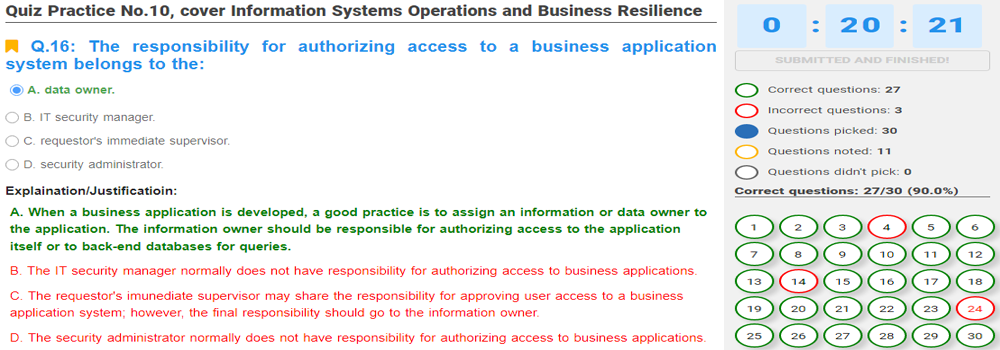[1Z0-084 DUMP UPDATED JULY, 2024] Oracle Database 19C Performance Management and Tuning Cert code: 1Z0-084, Questions of the exam: 55, Minutes of the exam: 90, Correct to pass: 60%.
[1Z0-084 DUMP UPDATED JUNE, 2024] Oracle Database 19C Performance Management and Tuning Cert code: 1Z0-084, Questions of the exam: 55, Minutes of the exam: 90, Correct to pass: 60%.
[1Z0-084 DUMP UPDATED APRIL, 2024] Oracle Database 19C Performance Management and Tuning Cert code: 1Z0-084, Questions of the exam: 55, Minutes of the exam: 90, Correct to pass: 60%.
[1Z0-084 DUMP UPDATED FEBRUARY, 2024] Oracle Database 19C Performance Management and Tuning Cert code: 1Z0-084, Questions of the exam: 55, Minutes of the exam: 90, Correct to pass: 60%.
[1Z0-084 DUMP UPDATED JANUARY, 2024] Oracle Database 19C Performance Management and Tuning Cert code: 1Z0-084, Questions of the exam: 55, Minutes of the exam: 90, Correct to pass: 60%.
SOME NOTES ABOUT ORACLE DATABASE 19C PERFORMANCE MANAGEMENT AND TUNING:
Oracle Database 19C Performance Management and Tuning [1Z0-084] is an important and mandatory certification on your path to becoming an expert in your field.
To get this certificate, you need to firmly and confidently grasp the content listed below. Then, you need to pass the exam directly on ORACLE's system. This exam has a duration of 90 minutes, with 55 questions. You need to answer correctly at least 60% of the total questions on the exam.
Below are the contents that you need to grasp firmly and confidently before registering to take the exam on ORACLE's system:
1. Basic Tuning Methods and Diagnostics.
1.1. Tuning Methodologies.
1.2. Tuning Lifecyles phases.
1.3. Describe the time model.
1.4. Explain wait events.
1.5. Diagnosing performance problems using V$ views.
2. Using Statspack.
2.1. Installing and configuring Statspack.
2.2. Diagnosing performance problem using Statspack.
3. Using Log and Trace Files to Monitor Performance.
3.1. Using the Alert Log to Monitor Performance.
3.2. Using Trace files to Monitor Performance.
4. Using Metrics, Alerts and Baselines.
4.1. Monitoring performance using metric thresholds and alerts.
4.2. Using AWR baselines to monitor performance.
5. Using AWR-Based Tools.
5.1. Diagnosing performance issues using ADDM.
5.2. Diagnosing performance issues using ASH reports.
5.3. Using Automated Maintenance Tasks to Manage Performance.
6. Performing Oracle Database Application Monitoring.
6.1. Implementing Real-Time Database Operation Monitoring.
6.2. Configuring and using services to monitor database Application performance.
7. Identifying Problem SQL Statements.
7.1. Understand the phases for SQL statement processing.
7.2. Interpreting execution plans.
7.3. Using formatted output of SQL Trace or the optimizer trace to identify poorly performing SQL statements.
7.4. Monitoring Adaptive / Dynamic Execution plans.
7.5. Monitoring Automatic Reoptimization and SQL Plan Directives.
8. Influencing the Optimizer.
8.1. Explain how statistics influence the optimizer.
8.2. Configuring parameters to influence the optimizer.
9. Reducing the Cost of SQL Operations.
9.1. Shrinking Segments.
9.2. Managing Chaining and Migration.
9.3. Configuring Index and Table Performance Options.
9.4. Configuring table compression.
9.5. Diagnosing and tuning space related issues.
10. Using Real Application Testing.
10.1. Using SQL Performance Analyzer to test the impact of database changes.
10.2. Use Database Replay to check impact of system change on performance.
11. SQL Performance Management.
11.1. Managing optimizer statistics.
.11.2 Using the Optimizer Statistics Advisor.
11.3. Using the SQL Access and SQL Tuning advisors to Tune SQL statements.
11.3. Use SQL Plan Management to tune SQL statements.
12. Tuning the Shared Pool.
12.1. Diagnosing and resolving performance problems related to the shared pool.
12.2. Managing and Tuning the Result Cache.
13. Tuning the Buffer Cache.
13.1. Diagnosing and resolving performance problems related to the buffer cache.
13.2. Diagnose database I/O issues.
13.3. Configuring Big Table Caching.
13.4. Configuring Flash Cache.
14. Tuning the PGA.
14.1. Diagnosing and resolving performance issues related to PGA.
14.2. Diagnosing and resolving performance issues related to temporary tablespace.
15. Using Automatic Memory Management.
15.1. Configuring Automatic Shared Memory Management.
15.2. Configuring Automatic Memory Management.
16. Using In-Memory Features.
16.1. Configure and Use in memory columnn store to improve SQL performance.
16.2. Use in memnory column store with other database features..
GOODLUCK TO YOU!!!




